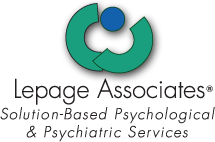How Does Bipolar Disorder Affect Your Life or the Life of Someone You Love?
Colloquially known as manic-depression, how does bipolar disorder affect your life or the life of someone you love? Learn about how treatment can help.
Jonathan is a 35-year-old attorney who moved from Colorado to North Carolina. He started seeing a psychiatrist to continue his medication treatment with a mood stabilizer. He had been successful in work and relationships since he was diagnosed with bipolar disorder and treated in college. Moving to North Carolina was difficult because he worked all the time and had not made many new friends. About six months after he moved, he noticed a change in his mood. For about a month, he felt increasingly energetic although was not sleeping more than three hours at night. Co-workers noticed he was talking very quickly, and he seemed to have so many thoughts going through his head that he could not get them all out. He started working longer and longer hours, but did not really get anything completed, and jumped from project to project. He also went out to bars after work each night and drank until they closed. What was going on with Jonathan?
Jonathan had a Manic Episode, which includes a distinct period of abnormally and persistently elevated, expansive, or irritable mood, lasting at least one week (Jonathan’s mood would be described as elevated). Three or more of the following symptoms generally persist (four if the mood is only irritable) and are present to a significant degree.
- Inflated self-esteem or grandiosity. – This did not appear to happen with Jonathan.
- Decreased need for sleep. – Jonathan felt rested after only three hours of sleep.
- More talkative than usual or pressure to keep talking. – This was noted by Jonathan’s co-workers.
- Flight of ideas or subjective experience that thoughts are racing. – Jonathan felt he had so many thoughts going through his head that he could not get them all out.
- Distractibility. – This was evident in Jonathan’s inability to finish projects at work.
- Increase in goal-directed behavior – This was demonstrated by his longer and longer hours spent at work.
- Excessive involvement in pleasurable activities that have a high potential for painful consequences such as unrestrained shopping sprees, sexual indiscretions, or foolish business investments. – Jonathan drank until the bars closed each night after work.
Bipolar disorder is often comorbid with other disorders such as alcohol or drug abuse or dependence, anxiety disorders, eating disorders, and personality disorders.
So, what can be done to help Jonathan?
Bipolar disorder is the result of genetic and biological vulnerability that leads to mood disorder symptoms and dysregulation. This, combined with life and family stressors, triggers episodes.
The most common forms of treatment are medications such as mood stabilizers (for example, Lithium & Depakote). Sometimes, in an acute manic phase, an antipsychotic (such as Risperdal) is prescribed. After someone has been stabilized for a while, they might be prescribed an antidepressant (such as Prozac). Because people often go through phases when they do not take their medication, (and even when they do, they have ‘breakthrough episodes’ – similar to what happened to Jonathan; breakthrough episodes develop when there is a reoccurrence of symptoms.) It is recommended to people with bipolar disorder that they also attend therapy.
In individual therapy, people learn the importance of medication adherence and stress management. They develop an understanding of their signs of depressive and manic episodes. They realize the importance of self-care such as balanced eating, exercise, regular sleep routines, and relaxation. They develop a plan with family and friends to recognize their symptoms and intervene when necessary. They also learn to challenge their depressive thinking and increase positive experiences to help manage their emotions.
In family and marital therapy, individuals learn how to express emotions, communicate, and recognize when they are experiencing stress and other symptoms. Education about bipolar disorder is often completed with families to help them understand their loved one’s vulnerability to future episodes and the need for medication. Families also need to be taught the difference between symptoms and personality, how to recognize and learn to cope with their own stressors, and the importance of reestablishing relationships after episodes.
What happened to Jonathan?
Jonathan was taken to the emergency room and a call was placed to his psychiatrist. The psychiatrist was able to work with him on an out-patient basis to adjust his medication, although Jonathan did take a week off of work to help reduce his stress level. The psychiatrist also recommended Jonathan see a clinical psychologist trained to do therapy with people with bipolar disorder. Jonathan started to readjust within a week and started to really feel better within about a month. For the past year, he has learned to only work 40-hours a week, get enough sleep, exercise, eat healthfully, take his medication, and spend time getting to know people and relaxing. He has also learned to recognize his symptoms in case he starts to feel depressed or manic.
Bipolar disorder is not unmanageable, but it cannot be treated by self-help alone. If you think you or someone you know suffers from bipolar disorder, now is the time to seek a consultation regarding prevention and treatment.
References:
American Psychiatric Association. (2000). Diagnostic and statistical manual of mental disorders (4th ed., text rev.). Washington, DC: APA.
Miklowitz, D. (2001). Bipolar Disorder. In Barlow, D. (Ed.). Clinical handbook of psychological Disorders, 3rd ed. (pp. 523-561). New York: Guilford Press.
